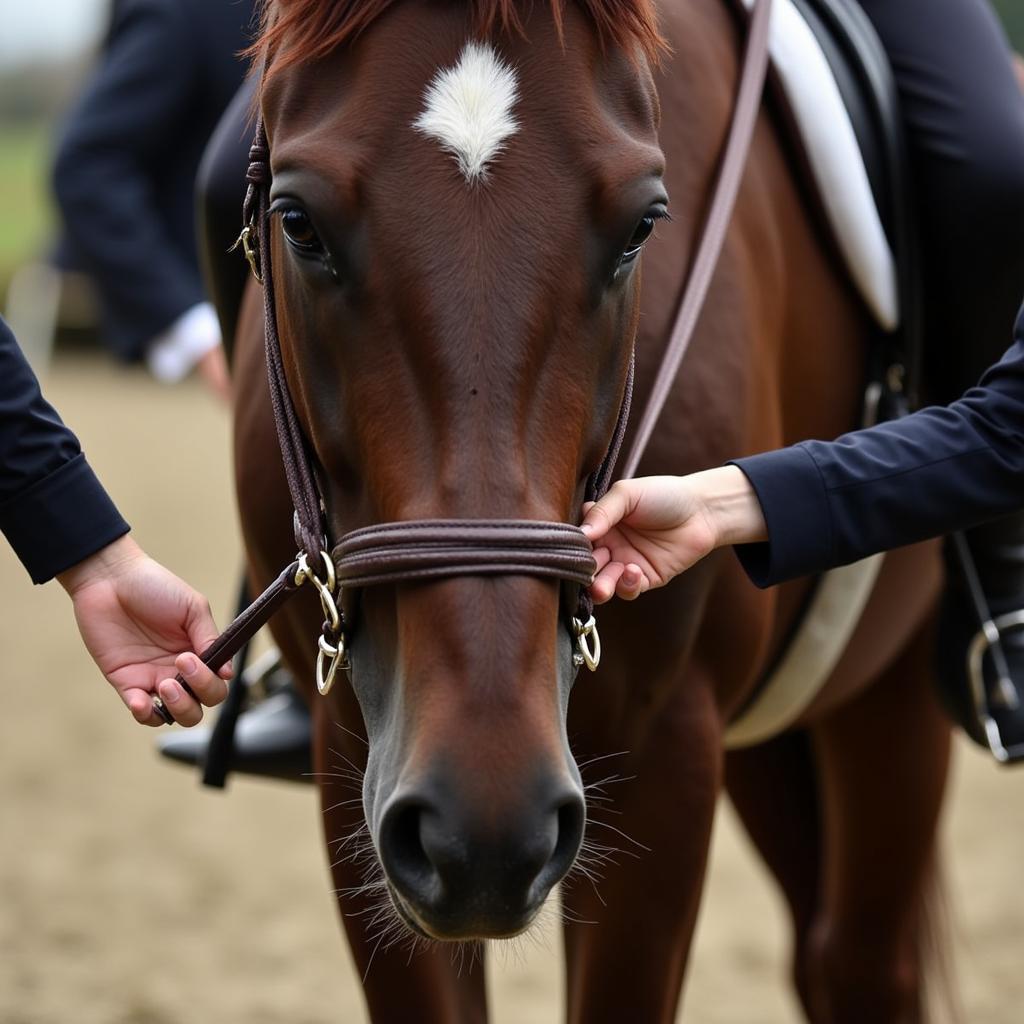The Balletic Horse, a creature of grace and power, captivates audiences with its fluid movements and seemingly effortless elegance. But what creates this mesmerizing display? This article delves into the world of balletic horses, exploring the training, breeds, and dedication required to achieve such harmonious performances. Let’s discover the magic behind these equine athletes.
Unveiling the Art of Equine Ballet
Balletic movements in horses aren’t innate; they are the result of years of dedicated training and a deep bond between horse and rider. Disciplines like dressage and haute école showcase these advanced movements, transforming the horse into a living work of art. Specific breeds, such as the Andalusian, Lipizzaner, and Friesian, are often favored for their natural athleticism and predisposition to these elegant movements. Their conformation, combined with expert training, allows them to perform intricate steps like the piaffe, passage, and levade with breathtaking precision. These breeds, often associated with horse legend, are truly remarkable.
Horses don’t just learn these movements overnight. The training process is a gradual and meticulous one, requiring patience, consistency, and a deep understanding of equine biomechanics. It starts with building a strong foundation of basic dressage principles and progressively introduces more complex movements as the horse develops strength and coordination.  Horse and rider practicing dressage movements in a training session.
Horse and rider practicing dressage movements in a training session.
Breeds Predisposed to Balletic Grace
Certain horse breeds are particularly well-suited for balletic movements due to their natural conformation and temperament. The Andalusian, with its proud carriage and flowing mane, is known for its expressive and graceful movements. The Lipizzaner, famed for its performances at the Spanish Riding School in Vienna, exhibits remarkable agility and precision. And the Friesian, with its powerful build and long, flowing mane and tail, brings a dramatic flair to its balletic performances. Imagine a black horse flying through the air, executing these elegant moves – a truly captivating sight. You might even find a famous painter of horses capturing this breathtaking scene on canvas.
However, it’s important to note that any breed, with the right training and dedication, can learn to perform some level of balletic movements. The key is to work with the horse’s natural abilities and build a solid foundation of basic dressage training before progressing to more advanced movements.
What is a Balletic Horse?
A balletic horse is a horse trained to perform advanced dressage movements that resemble the grace and precision of ballet. These movements require a high degree of athleticism, balance, and coordination from the horse, as well as skillful riding and training. Think of it as a partnership where horse and rider become one, moving in perfect harmony.
How are Balletic Horses Trained?
Training a balletic horse is a long-term commitment, often taking years of consistent work. It involves building a strong foundation of basic dressage principles and gradually introducing more complex movements as the horse develops. Positive reinforcement techniques are crucial, focusing on rewarding the horse for correct responses rather than punishing mistakes. This process builds trust and encourages the horse to willingly participate in the training.
“Building trust and rapport is fundamental to success in training a balletic horse,” says renowned equine trainer, Amelia Hernandez. “It’s about understanding the horse’s individual needs and working with them, not against them.”
The Role of the Rider in Equine Ballet
The rider plays a vital role in the performance of balletic movements. They must possess a deep understanding of dressage principles and be able to communicate effectively with the horse through subtle cues and aids. The rider’s posture, balance, and timing are crucial for guiding the horse through the intricate steps and maintaining the fluidity of the movements.  Close-up of a rider's hands holding the reins and communicating with the horse.
Close-up of a rider's hands holding the reins and communicating with the horse.
“The rider acts as a conductor, orchestrating the horse’s movements with precision and finesse,” adds Dr. James Carter, a veterinarian specializing in equine sports medicine. “It’s a delicate balance of guidance and allowing the horse to express its natural athleticism.”
The Magic of the Balletic Horse: A Conclusion
The balletic horse represents the pinnacle of equine athleticism and artistry. It’s a testament to the dedication and partnership between horse and rider, a journey of years of training and mutual understanding. Whether you’re a seasoned equestrian or simply admire the beauty of these magnificent animals, the balletic horse is sure to inspire awe and wonder. The balletic horse is more than just a trained animal; it’s a symbol of grace, power, and the enduring bond between humans and horses.
FAQ
- What breeds are best suited for balletic movements? While many breeds can learn, Andalusians, Lipizzaners, and Friesians are often favored.
- How long does it take to train a balletic horse? It’s a long-term commitment, often taking years of consistent work.
- What is the most important aspect of training? Building trust and rapport between horse and rider is crucial.
- What are some of the most iconic balletic movements? Piaffe, passage, and levade are among the most impressive.
- Where can I see balletic horses perform? Dressage competitions and exhibitions showcase these stunning displays.
- Is it cruel to train horses for balletic movements? No, when done correctly with positive reinforcement and respect for the horse’s well-being.
- Can any horse learn balletic movements? With the right training and dedication, any breed can learn some level of balletic movements.
You might also be interested in reading our articles on horse legend and black horse flying. For insights into the artistic representation of these majestic creatures, check out our piece on famous painter of horses.
Need assistance with your equine companion? Contact us at Phone: 0772127271, Email: [email protected] or visit us at QGM2+WX2, Vị Trung, Vị Thuỷ, Hậu Giang, Việt Nam. Our customer care team is available 24/7.